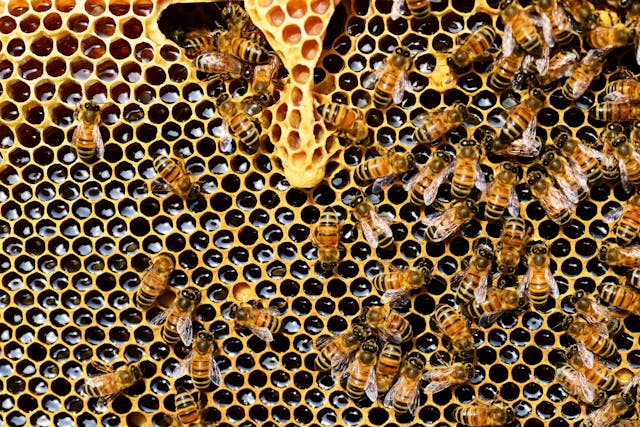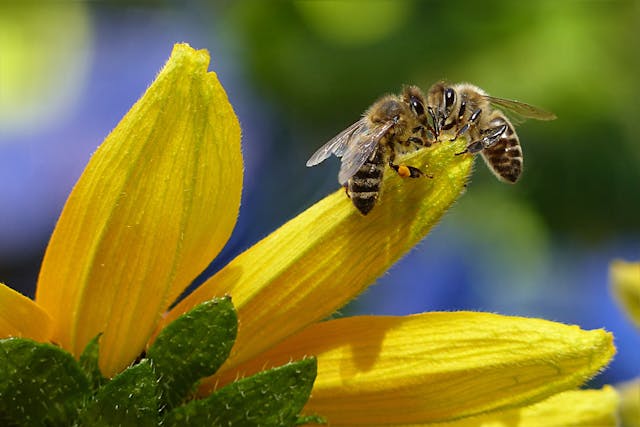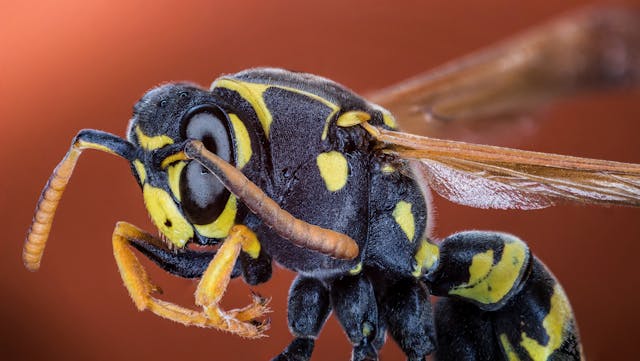When it comes to buzzing insects, wasps and bees are often lumped together in the same category. They fly, they sting, and they can turn a peaceful afternoon outdoors into a frantic game of dodge-the-bug.
But despite their similarities, wasps and bees are quite different creatures with unique behaviors, appearances, and roles in our ecosystem. In this blog, we’ll explore the key differences between wasps vs. bees and discuss how to deal with each, especially when they get a little too close for comfort. Keep reading to learn more!
Wasps vs. Bees: The Basics
At first glance, wasps and bees might look similar, but these two insects are like distant cousins who took very different life paths. Here’s a deeper dive into their differences:
Bees are nature’s gentle workers. Their bodies are typically plumper, covered in fine hairs that make them look fuzzy. These hairs aren’t just for show—they play a crucial role in helping bees collect and transfer pollen from flower to flower.

Pollination is vital for plant reproduction and directly impacts the foods we eat. Bees, typically more interested in their work than people, busily move from bloom to bloom, gathering pollen and nectar.
On the other hand, wasps are the sleek, predatory cousins of bees. Their bodies are more slender and smooth, lacking bees’ fuzzy exterior. This streamlined design makes them agile hunters, and instead of collecting pollen, wasps are on the lookout for food to feed their larvae.
However, this predatory nature also makes wasps more aggressive than bees. They’re territorial and will not hesitate to sting multiple times if they feel threatened. Unlike bees, wasps have smooth stingers that can be used repeatedly without harming themselves.
Wasp and Bee Behavior
Understanding the wasps vs. bees distinction isn’t just for trivia night. It’s practical knowledge. Knowing who’s who can help you avoid unnecessary stings and handle encounters better.
Another key difference between wasps and bees lies in their behavior. Bees are social insects living in large colonies, working together to produce honey and protect their queen.
Their barbed stingers are a one-time-use tool, meaning they typically die after stinging. This is why bees are generally less aggressive and will only sting when they feel genuinely threatened.

Wasps, in contrast, are more aggressive. They can sting multiple times without harming themselves, making them more dangerous in some situations. Their nests are often concealed in hidden locations, such as eaves, trees, or underground. This camouflaging makes wasp nests harder to detect, increasing the risk of surprising encounters.
How to Handle Wasp and Bee Encounters
So, what should you do if you come across wasps or bees in your daily life? Here’s a step-by-step guide to handle these encounters safely and effectively:
Stay Calm: First and foremost, stay calm. Quick or erratic actions might make them feel threatened and increase the likelihood of being stung. Move slowly and avoid swatting at them, which can be seen as an aggressive gesture.
Identify the Insect: Try to identify whether the insect is a bee or a wasp. If it’s a bee, gently move away from the area without making sudden moves. If it’s a wasp, remain cautious and slowly distance yourself from the area.
Protect Your Home: Regularly inspect your property for signs of nests. Wasps often build their nests in concealed locations such as under roof eaves, inside trees, or even underground. Bee hives are usually more visible and frequently found in areas like garden structures or near flowering plants.
Handling Nests: If you discover a nest, avoid attempting to remove it yourself, especially if it’s in a high-traffic area. Disturbing a nest can lead to aggressive behavior from the insects and increase the risk of stings. For bees, consider contacting a local beekeeper who can safely relocate the hive without harming the bees. Beekeepers have the expertise and equipment to handle the situation with minimal risk.
For wasps, it’s best to contact a professional pest control service. A pest control expert can assess the situation, safely remove the nest, and provide advice on preventing future infestations.
In both cases, professional intervention ensures that the situation is handled safely and effectively, reducing the risk of harm to you and your family.
Preventing Problems with Wasps and Bees

Prevention is always better than dealing with an infestation. Here are some tips to keep wasps and bees from becoming a problem:
- Secure food and trash: Wasps are attracted to sugary foods and garbage. Make sure outdoor trash cans are sealed and food is covered when eaten outside.
- Seal entry points: Check your home for gaps or holes where wasps might enter. Bees are less likely to come inside, but keeping your home sealed is still good practice.
- Avoid bright colors and floral scents: Bees and wasps are attracted to flowers, so wearing bright colors or floral perfumes can make you a target.
- Use natural repellents: Certain plants like mint, eucalyptus, and citronella can help deter these insects. Planting them around your home can create a natural barrier.
When to Call in the Pros | Pest Control in Seattle, WA
If wasps and bees are becoming more than just an occasional visitor in your yard, it might be time to call in professional help. Sentinel Pest Control specializes in handling these kinds of situations. When you have a stinging insect problem in the Seattle, Washington, area, give us a call!

